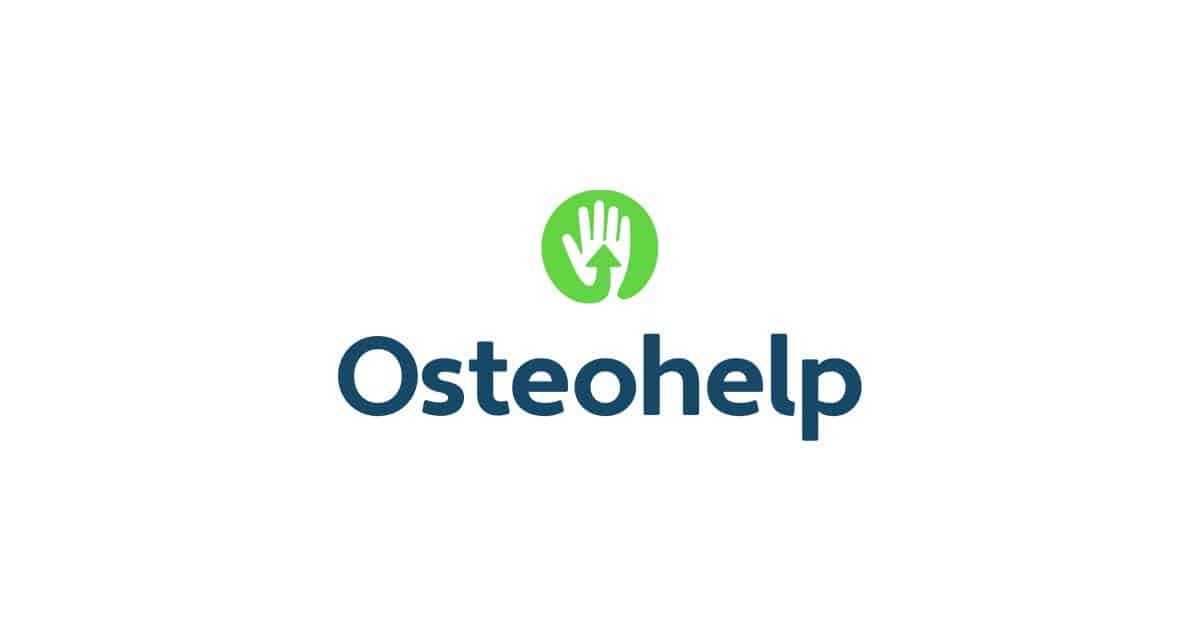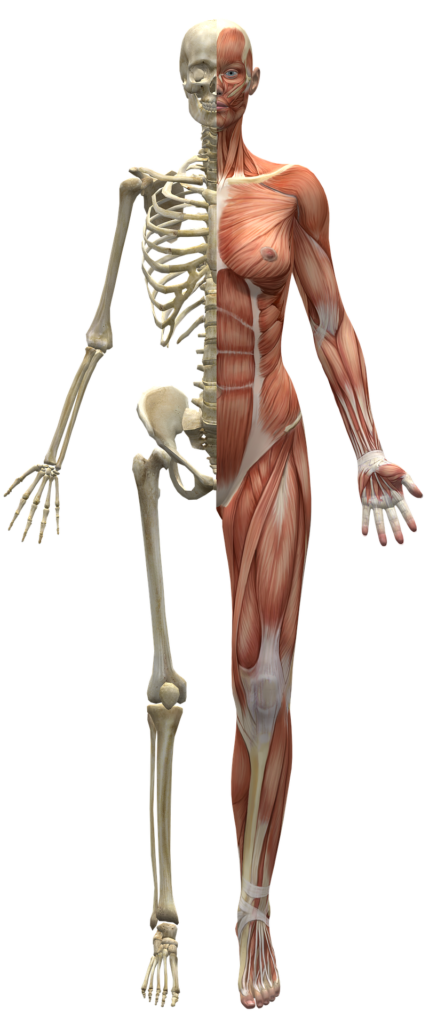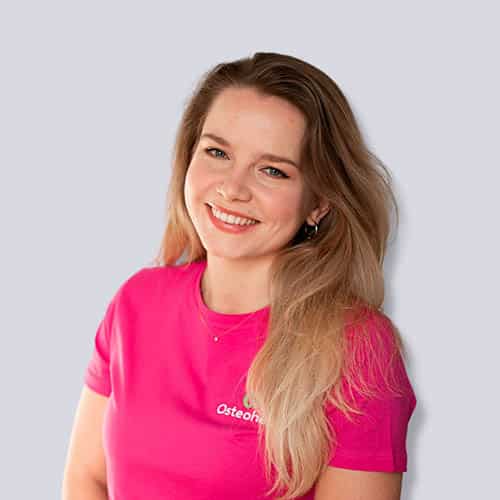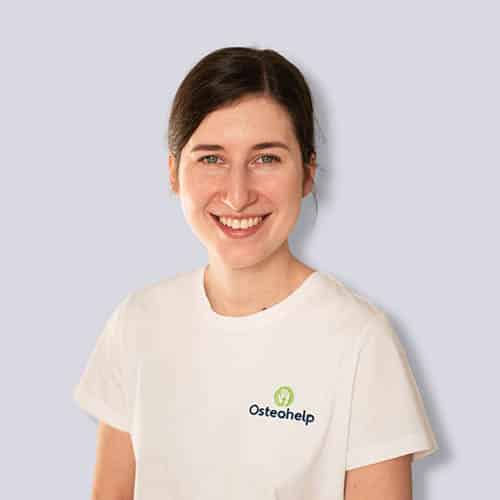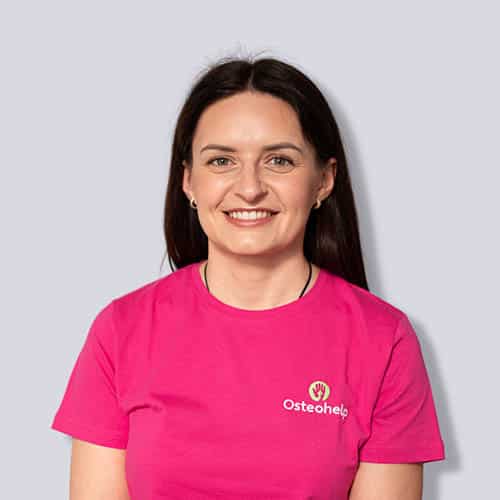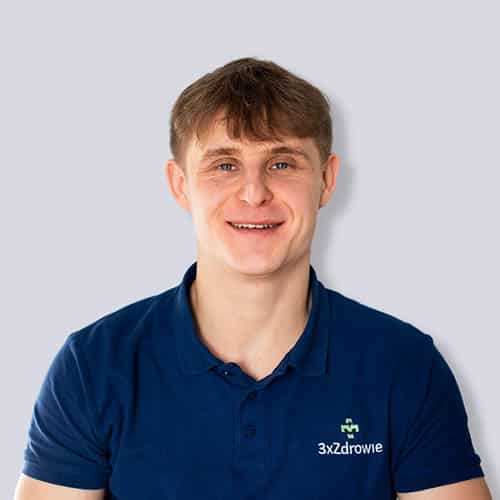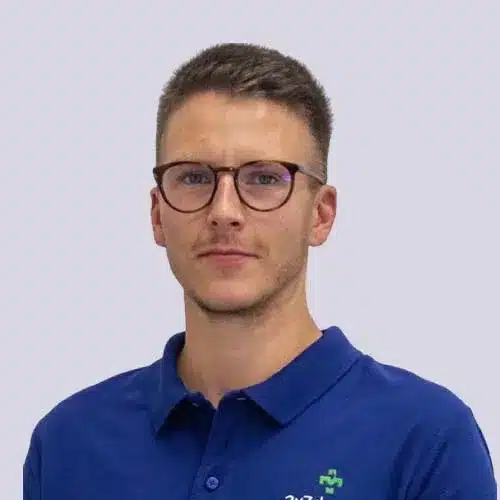Osteopathic diagnosis & treatment.
We offer specialist osteopathic diagnosis and therapy for both adults and children. Osteopathy is a branch of medicine focusing on a holistic approach to health. The combination of a comprehensive knowledge of anatomy and physiology, along with professional techniques, allows our specialists to effectively help patients with a wide range of chronic pain conditions – the effects of overload, trauma and injury.
Osteopathy is based, among other things, on the human body’s natural ability to regenerate. It is an extremely safe and useful method for a wide range of problems, at every stage of a person’s life. Its beneficiaries can range from infants, pregnant and post-partum women, to highly active people, to those struggling with lifestyle diseases. We want to offer the highest level of assistance to everyone.
ADDRESS
ul. Limanowskiego 15
30-551 Krakow
PRACTICE HOURS
Monday – Friday
8:00 – 21:00
Diagnosis and therapy with an osteopathic therapist
Osteopathy assumes that all processes in the body are interconnected – spinal pain does not necessarily have to be caused by spine overloading or degenerative changes. The culprit could be reflux, gastrointestinal problems or prolonged stress, which is so common these days.
With osteopathy, it is possible not only to locate the actual cause of the discomfort, but also to initiate and promote the process of self-healing. Aiming to restore balance in the body is the most important goal of therapy. It involves the skeletal and articular systems as well as the muscular and even the lymphatic systems. In osteopathic therapy, we can distinguish between a number of techniques of proven clinical value, such as vertebral and joint mobilisations and manipulations, cranio-sacral therapy, or manual therapy. Our specialists will choose the best methods for the patient.
Our body is not just the sum of its parts – it is more than that
Osteopathy is an extremely effective method of diagnosis, treatment and prevention. Our body has an extraordinary capacity for revitalisation and a genetically encoded desire to return to full harmony and balance. The osteopathic therapist initiates the healing process by finding the root cause of each problem in order to effectively remove it.
– Adam Kuk, Physiotherapist and Osteopathic Therapist
Osteopathic techniques
Craniosacral osteopathy
Craniosacral osteopathy – represents a way of working with the whole body, not just the skull and sacrum. This approach perfectly encapsulates the main objectives of osteopathy, as it draws attention to the complexity of the cranial structure and its mobility, the role of cerebrospinal fluid circulation in the human body, and the impact of the correct level of tension within the brain.
Visceral osteopathy
Osteopatia wisceralna – obszar, w którym główną rolę odgrywa redukowanie wzmożonego napięcia umiejscowione w narządach wewnętrznych, takich jak żołądek, jelita, serce, płuca czy wątroba. Problemy z oddychaniem, trawieniem, bóle brzucha o niewiadomej etiologii, refluks i inne objawy mogą okazać się możliwe do usunięcia dzięki pracy z systemem wisceralnym pacjenta.
Structural osteopathy
Structural osteopathy – deals specifically with problems related to the skeletal system, helping to find the causes of osteoarticular and muscular pain, and can particularly benefit those struggling with chronic spinal pain. One of the techniques used here is the Ackermann method, which is a targeted method – interacting precisely at the site of the problem.
EFFECTIVE THERAPEUTIC METHODS AND TECHNIQUES
Osteopathic therapy is painless and does not require additional support of drug treatment. Consequently, it can even eliminate the patient’s need for painkillers, even if this has been a regular part of their daily routine. If the osteopathic therapist identifies the need for additional laboratory tests or consultation with another specialist, they will inform the patient immediately. Osteopathy is not an alternative to traditional medicine, it complements it and is an integral part of it.
The basis for starting treatment is always a thorough diagnostic interview and a manual examination to determine, among others, the distribution of tension in the patient’s body, assess the mobility of muscles, joints and ligaments – in other words, palpation anatomy, performed with the hands.
The osteopathic therapist will ensure that the purpose of each stage of the appointment is carefully explained to the patient. Clear communication helps create an atmosphere of warmth and understanding in the practice, which plays a significant role in the recovery process. We want to care not only for our patients’ bodies, but also their psyches.
The appointment begins with a detailed interview, during which, in addition to determining the immediate reason for the patient’s visit, an analysis is performed of examinations and other factors such as co-morbidities, accompanying symptoms, history of injury, trauma, surgery and previous drug treatment. During the interview, the osteopathic therapist asks questions only seemingly unrelated to the patient’s specific ailment that provide a broader view of the patient’s general condition and allow for a better identification of the root cause of the problem or a significant part of it. It is extremely important to provide the doctor with as much relevant information as possible during the appointment regarding our lifestyle, as well as our mental and physical wellbeing.
Examination by palpation (using the hand) is an assessment of the mobility of muscles, joints and ligaments as well as the appearance, symmetry and condition of individual body parts. Using a number of clinical tests, the osteopathic therapist assesses the distribution of tension in the patient’s body to determine the causes of pain. Osteopathic therapy is based on gentle manual work. Its main aim is to reduce increased abnormal tension in the body, systemic dysfunctions, improve bone-muscle-ligament mobility, regulate the flow of body fluids and alleviate pain.
Each patient is more than a medical record – it is an individual story which constitutes the basis for choosing the right treatment plan. We always look for the root cause. Tension and dysfunction in other parts of the body can be a frequent source of pain, even if located far from the source of pain.
The number of therapy sessions required is a very individual issue. Therapy can be successful after one appointment or may require several sessions. For some, especially with chronic conditions, continued regular appointments at specific intervals are needed.
Paediatric osteopathy
Due to the gentleness and non-invasiveness of the techniques used, they can even be applied to newborn babies, e.g. to eliminate the consequences of the way the baby was positioned during pregnancy and difficult birth. It is also useful for developmental disorders such as trunk asymmetry, sensory integration disorders, tension disorders, colic, concentration problems and in any issues where it is helpful to adults.
Urogynaecological osteopathy focuses on supporting the pelvic floor muscles, reducing pain and tension in the pelvic floor, also protecting against the onset of stress urinary incontinence. Among other things, it is used in case of painful intercourse and menstruation, menstrual disorders, as well as perineal pain of various causes.
Osteopathy helps deal with changes in body structures and in physiology that occur during pregnancy, causing increased tension. The use of manual therapy can lead to a smoother and less painful birth, facilitating a full recovery in the postpartum period. Its aims include getting rid of swelling, lumbar pain and pelvic area pain, as well as preventing lowering of the reproductive organs and regulating the diaphragm.
Osteopathy in sports – helpful for both active individuals and professional athletes. It helps boost the body’s performance level, resistance to injury and also enables faster recovery after intensive activity. It contributes to training efficiency and can make a significant contribution to improving performance, especially when used regularly.
Injuries are not only the result of unfortunate accidents, but also the result of fatigue or incorrect movement patterns, e.g. when exercising with incorrect techniques, overloading the body and being negligent. Manual therapy provides invaluable support in dealing with each of these problems, as well as preventing their recurrence, significantly improving rehabilitation.
The key to starting to work on postural defects is proper diagnosis, this is what allows us to define the cause of a series of tension disorders in the body. Diagnosis includes an interview and palpation examination. On that basis, the therapists correct the patient’s body misalignment through carefully selected manual therapy and postural muscle strengthening exercises.
Psychosomatic osteopathy – suppressing emotions and using unhealthy ways of reducing stress leads to an accumulation of tension in the body, which can result in a range of psychosomatic complaints, including migraines and headaches, chronic fatigue, sleep and concentration disorders and even depression. Such patients are offered craniosacral osteopathic therapy and our aim is to improve the circulation of cerebrospinal fluid.
Dental osteopathy – focuses on dysfunctions arising in the temporomandibular joint, often latent until severe pain and serious consequences occur. Their cause can be trauma, malocclusion, bruxism, as well as postural defects in the cervical region. In such a case, selected mobilisation techniques, soft tissue manual therapy and other forms of interventions are often used.
Neurological osteopathy – especially helpful for patients struggling with chronic migraines, neuralgia, drug-induced headaches, labyrinth disorders, cranial nerve dysfunctions or excessive tension in the jaw, neck and temples. Recurrent sinusitis, neck pain and tinnitus are also difficulties that can be alleviated with its techniques.
MEET OUR TEAM
HOW CAN WE HELP?
Rehabilitation of balance disorders first and foremost involves an accurate diagnosis to find the causes. Following their discovery, manual techniques are used in treatment to restore soft tissue tension, improve blood supply and innervation. Often the physiotherapist will also recommend coordination exercises to improve the patient’s deep sensation and posture.
The aim of rehabilitation treatments for headaches is to restore adequate muscle and fascial tension, correct postural defects as well as increase joint mobility. As a result of the therapy provided, patients very often achieve full recovery. The restored musculofascial tension makes the body more flexible and the tissues better nourished. This, in turn, leads to the repair of the nerve structures and thus to the symptoms being resolved.
Carefully selected and guided treatments and exercises not only eliminate adverse physical symptoms, but also have a positive impact on the psyche. Reduction in pain or improvement in dexterity means that the patient very often feels an improvement in their mood and forgets about everyday worries.
An effective therapeutic method for the elimination of memory and concentration disorders is craniosacral therapy. It ensures proper blood supply in the central nervous system. Concentration problems not only limit the efficiency of our mind and make everyday life more difficult, but may also be indicative of serious neurological conditions, brain tumours, dementia or psychiatric diseases such as depression or schizophrenia. These complications are most often due to chronic stress, fatigue, overwork or lack of adequate sleep. By relaxing the fascial structures in the skull, pelvis, diaphragm, thorax and sacrum, the therapist is able to balance the activity of the nervous system and remove concentration disorders.
Osteopathy dedicates visceral techniques to people suffering from ailments of the digestive system (tension in the intestines, stomach, liver). It involves relaxing the internal organs within the abdominal and oesophageal cavities. The therapy is recommended for patients struggling with reflux, stomach ulcers, constipation, diarrhoea, liver failure or irritable bowel syndrome. Digestive problems adversely affect the function of the diaphragm, often resulting in respiratory distress, blood pressure spikes, lowered mood and pain.
Their pathogenesis can be varied. Many of these are related to daily strains, accidents, sports or injuries. Other complaints arise from tension imbalances within the internal organs. More are generated in the body as a result of psycho-emotional tensions. It is very common for the above problems to come from all these sources. Appropriately selected osteopathic techniques targeting the area of the cause of the problem enable the human body to regain its correct balance within the skeletal and muscular system, which directly leads to recovery.

